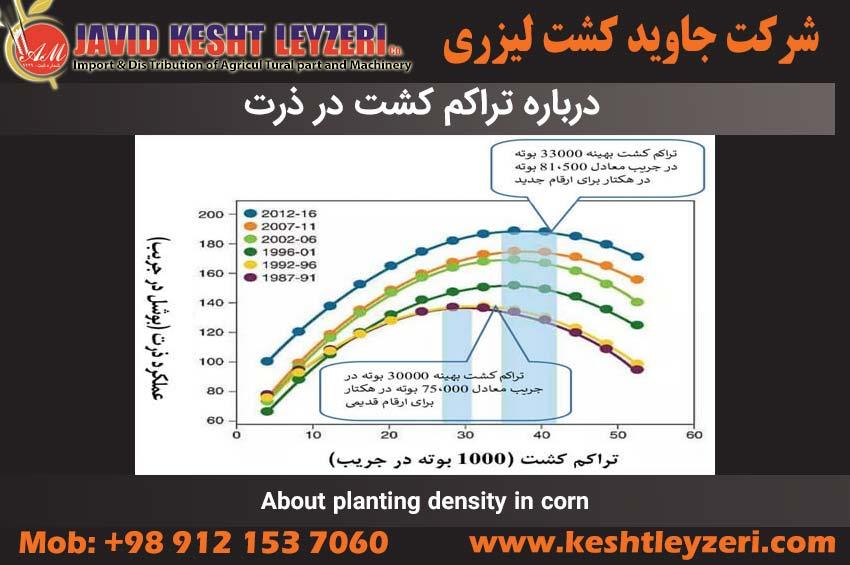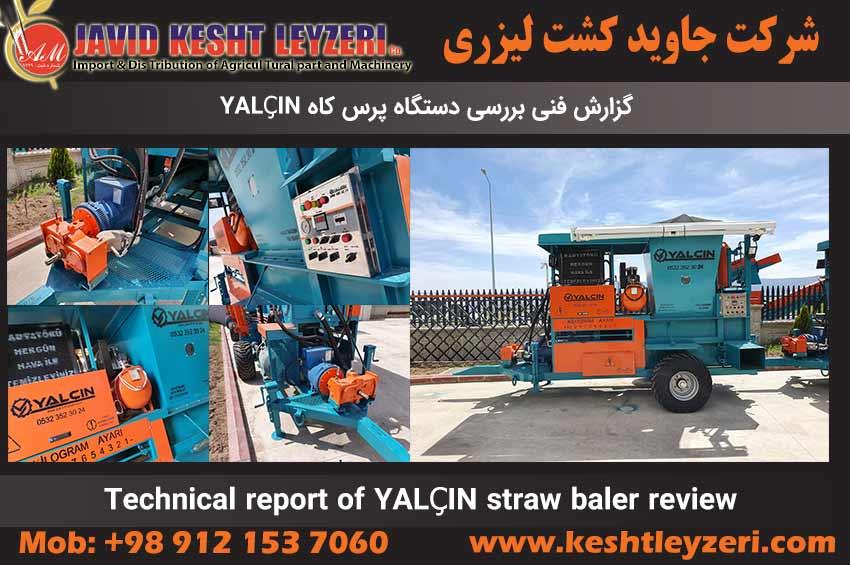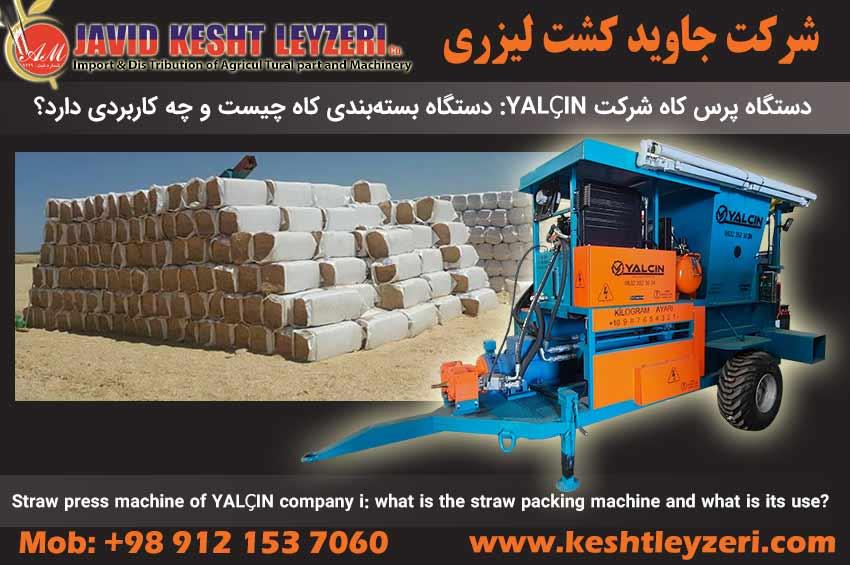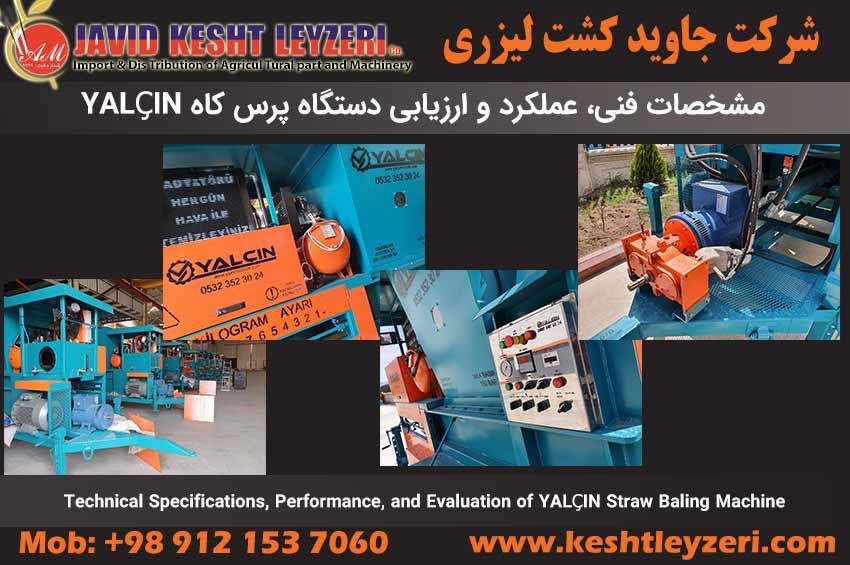
About planting density in corn
javid keshtleyzeri Co.ltd
With the increase in the cost of corn production and the fluctuation of grain prices, much importance is given to the correct decisions of farmers in planting and observing density to maximize profits. The use of seeds is also of particular importance, because seeds comprise about 10% of the total cost of corn production.
Optimal plant density is essential to maximize net yield from corn production. Corn yield increases with higher plant density and reaches its maximum value at a certain density.
Research shows that to maximize profits, farmers need to focus on the final economic break-even of 80,000 to 84,000 plants per hectare, depending on seed prices and corn prices.
In this section, you will learn about the following:
What is the density of corn planting?
What is the importance of optimal corn planting density?
What is the response of corn yield to plant density?
How to determine the optimal density for corn cultivation?
What is the optimal economic density in contrast to the optimal agricultural density of corn cultivation?
What is the amount of seed used for the density of corn cultivation?
What is variable rate consumer seed technology?
The contents are presented below.
What is the density of corn planting?
The planting density of corn should be higher than the optimal plant density to compensate for the losses of seedlings in the early season. Depending on the percentage of plant vigor, the planting density should be 10-15% higher than the target density to compensate for the losses in the first season. In grain corn, including 12% damage, the number of seeds planted should be 89,600 to 100,000 per hectare. Of course, the later the planting is, the number of seeds planted should be higher.
Row spacing will not play a big role in determining the optimal density, but low row spacing can increase the yield of early-maturing corn.
In order to maximize the net profit, instead of paying attention to the agricultural density, it is also necessary to realize the desired economic density. This type of optimal density depends on the price of corn and the cost of seeds.
What is the importance of optimal corn planting density?
The cost of seed per acre has quadrupled over the past 20 years, making seed cost a major input in corn production. Optimizing plant density is a wise management decision to maximize net returns from corn production.
Like the yield of other cereals, the yield of corn seeds per hectare depends on the number of plants per hectare and the grain yield produced by each plant. Although the seed yield per plant decreases with increasing density, if the soil moisture is sufficient until the final yield is reached, the seed yield per hectare increases. Unlike other members of the cereal family, such as wheat or barley, corn does not produce fertile tillers, so it cannot compensate for poor compaction. Therefore, to achieve maximum yield and profitability, a suitable plant density is essential.
Maize yields have been steadily increasing over the past three decades, in part due to the higher densities used by farmers. Of course, sufficient plant density is needed to maximize yield, but over-optimal density also leads to a decrease in yield because it causes plants to compete for limited resources such as sunlight, nutrients, and water, and also increases production costs.
What is the response of corn yield to plant density?
Choosing the right density for corn cultivation is a critical issue that must be carefully managed. Proper density helps farmers reduce seed costs and increase their net returns, while avoiding other issues such as competition for resources and increased production costs. In other words, plant density optimization can be used as a management tool to maximize profitability in corn production.
New hybrids are able to tolerate more density due to better drought tolerance, increased stem and root strength, especially at the end of the season, reduced sensitivity to various types of stress and greater resistance to disease/insects.
How to determine the optimal density for corn cultivation?
Optimal plant density in corn can be affected by many factors. A better understanding of these factors will help determine the meaningful population to achieve maximum performance. The main factors affecting the optimal population of plants are as follows:
- Productivity level: the actual performance goals are one of the most important factors affecting the optimal density of the corn plant. The optimal plant density in a low yield environment (eg 6700 kg/ha) is significantly lower than the optimal population in a high yield environment (eg 15,000 kg/ha). The optimal population should be determined based on the realistic situation of this area in terms of productivity level. Actual predicted yield and optimal plant population for a given field are determined by soil and environmental conditions as well as management level. As a general rule, the higher the expected yield, the higher the plant density required.
Hybrid Selection: New hybrids have more genetic potential and stress tolerance than older hybrids. To fully exploit the benefits and improved genetic potential, higher plant populations are needed. Relative handling also affects desirable relatives of species. Also, early hybrids play a greater role in affecting the plant population than late hybrids. In addition, hybrids have differences in terms of canopy architecture, leaf position and ear type.
Planting date: Some farmers may think that a larger number of plants can compensate for a delay in planting date. But long-term research has shown that there is a weak relationship between the date of planting and the optimal number of plants. In other words, the optimal number of plants between early and late planting dates does not mean much.
Soil moisture: is a very important factor for corn yield. Corn yield is expected to improve when sufficient soil moisture is available to plants. This is usually due to healthy plant growth and more seed production. In more irrigated conditions, the optimal density of corn production is higher than in dry conditions. In other words, soil moisture directly affects the yield of corn, and if it is limited, it is expected that the yield will decrease.
What is the optimal economic density in contrast to the optimal agricultural density of corn cultivation?
Optimum crop density means the density that produces the highest seed yield. Beyond this density no performance gain should be expected. However, the optimal economic density is the density that produces the greatest net economic return. While optimal crop density depends only on yield, optimal economic density takes into account seed cost and seed price. Therefore, the optimal economic density is always lower than the optimal agronomic density (usually several thousand fewer plants per hectare). To maximize net profit, farmers should focus on economically optimal density rather than crop density.
For example: considering 9,000,000 rials for a bag of corn seeds with 90,000 seeds and 50,000 rials for each kilo of grain corn, every 5000 seeds planted per hectare should increase the yield by more from 10 kg per hectare. In this case, if the farmer were to increase the number of seeds from 85,000 to 90,000 seeds/ha, he would have to obtain at least 10 kg/ha more seed yield to compensate for the additional seed cost. If this yield increase is not met by increased plant population, then 90,000 plants/ha may be the best planting density while 85,000 plants/ha is the economically optimal density.
What is the amount of seed used for the density of corn cultivation?
After determining the desired density of the plant, it is necessary to calculate the amount of seed used to achieve the desired density at the time of harvest. The amount of seed used and the final planting density, although they are closely related, are rarely the same in the field. Final plant density is usually between 85% and 90% of planted seeds. This decrease in density compared to the consumed seed is caused by two factors. The first factor is the seed germination rate and the second factor is the amount of damage to the plants during the planting operation in the field. Mortality rates can be even higher under less favorable conditions (such as no-till fields with high residues).
It is better for the farmer to sow the appropriate amount of seed for the desired plant by taking into account the amount of seed strength indicated on the label of the seed bag, as well as the detailed history of the final density of the plant in his field in the past years, which shows the average amount of damage caused to the plant. convert to consumption. It is worth mentioning that in order to determine the final density in the field, it is necessary to count the population of the plant after the 6-leaf stage in order to determine the accurate estimate of the density in the field.
For example: if the target plant population is 85,000 plants per hectare and the establishment success rate is 95%, the seed rate to achieve this population will be 85,000 ÷ 0.95 = 89,473 seeds per hectare. If the success rate is 90%, the seed rate is 94,444 seeds per hectare. It is necessary for the farmers to determine the planting intervals according to the optimum density of the target in their farm and to control the planting intervals during the planting time so that they finally reach the final density of the target in their farm. In order to accurately calculate this matter, the system for calculating the density of planting and determining the amount of seed required for different cultivars of the Corn Cultivation Development Company has been designed. For other cultivars, if the weight of a thousand seeds is known, it is possible to perform calculations in this system.
What is variable rate consumer seed technology?
Due to the diversity of the soil, between farms or even different parts of a farm, they do not have the same economic density. Variable rate seeding technology allows farmers to vary the seeding rate when planting in different sections of a field. The system is based on different management zones in a farm, which relies on the history of plant performance in different parts of the farm in previous years. The use of graded yield monitors is very useful for this purpose and helps to better understand within-farm variability. Other tools such as remote sensing, ground sensors and grid soil sampling can also be used to define management areas. Once the management areas are determined, prescribed maps can be created and then run by the variable rate planter. The main goal of variable rate consumable seed technology is to save seed in low-yielding areas and plant more seed in higher-yielding areas, to reduce overall seed cost and increase net profit.






